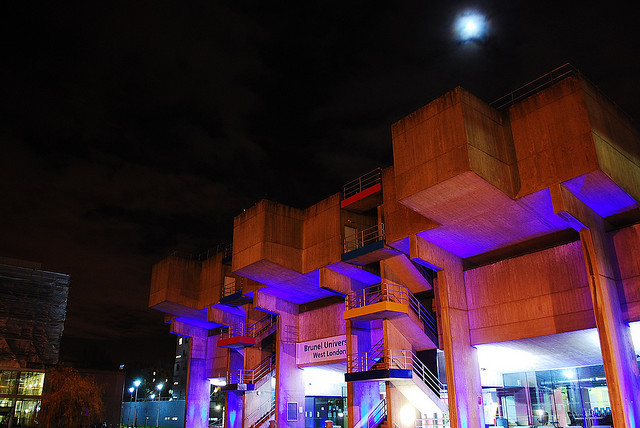
Stanley Kubrick was a child of the Bronx but he ended up in a decades-long fling with England. And though in his private life, the director set up home in Hertfordshire country piles, he would often weave London into the fabric of his pictures. Sometimes it would take centre stage, others, it would stand in for distant lands. Tangible fragments of Kubrick's legacy are still scattered all over London. The Big Smoke meant as much to the man as the Big Apple did.
Kubrick's first major UK project was Lolita (1962). While his take on the Nabokov novel sees Humbert Humbert (played by James Mason) as an English expat in the USA, the opposite was true for Kubrick. He moved to England to shoot the movie and would remain here for much of the rest of his life (some say it was love, some say he despised travel). London wasn't used in Lolita but the picture did introduce Kubrick to north London-based Peter Sellers. Kubrick fell in love with the chameleon-like comic, and scooped him up to play three roles in his following picture, Dr. Strangelove (1964).
One of the characters Sellers doesn't play in Dr. Strangelove is bodily fluids-obsessed nutjob Jack D. Ripper (Sterling Hayden) — a purposefully ham-fisted nod to London's most nefarious killer. IMDb crosses our palms with a couple more Londony nuggets: the photographic mural pinned up in Ripper's office depicts none other than Heathrow Airport (a little tenuous, granted). And the National Film Theatre is the only place to have publicly screened Dr. Strangelove's War Room food fight ending, which Kubrick scrapped on grounds of being too churlish.

Now we flash forward to the distant future — the year 2001. Yes, Kubrick's sci-fi freak out 2001: A Space Odyssey (1968) largely plays out in space and beyond. But in one scene in particular London left its mark. Remember the space age Louis XVI room Dr. David Bowman stumbles into right near the climax of the film? That's based on Kubrick's suite at the Dorchester, where he was holed up for the duration of 2001's filming in Elstree.
You don't have to check into the Dorchester for tangible 2001. The original clear polymer monolith (made by the aptly named Stanley Plastics, and rejected by Kubrick following screen tests) can now be found in St Katharine Docks. Left in storage for years, the block was dusted down, embossed with a crown, and displayed as part of the Queen's Silver Jubilee celebrations in 1977.
One other cute 2001-London fact. Kubrick's long-term attorney Louis C. Blau is quoted as saying of the director in preparation for filming, "He actually wanted an insurance policy from Lloyd’s of London to protect himself against losses in the event that an extraterrestrial intelligence was discovered before the movie was released". Lloyd’s declined.

Insurance be damned, Kubrick ploughed on making pictures. His next was also his most controversial — A Clockwork Orange (1971). This film is of particular note because the story of Alex (Malcolm McDowell) and his droogs unfolds in a dystopian London. It's a notoriously brutal picture and the shooting locations are fittingly Brutalist. Take Thamesmead South and Southmere Lake — which set the scene as Alex's stomping ground — and the campus of Brunel University in Uxbridge, which is where he is 'cured' of his ultra-violent ways.
One of the few conventionally picturesque London cameos is along Chelsea Embankment, by the Albert Bridge. And even in this, Alex is set upon by avenging tramps.

For now we'll skip Barry Lyndon (1975) and The Shining (1980) and come straight to Kubrick's third war-themed film, Full Metal Jacket (1987). The second half of the picture is set in Vietnam — but don't be fooled — it was shot around Beckton Gas Works (which apparently bore an uncanny resemblance to the Vietnamese city of Hue). In his book This Other London, John Rogers makes the pilgrimage to 'Bec Phu' hoping to find leftover palm trees. Alas, they are there no longer, although Rogers does discern where certain scenes were shot: "The squad at the heart of the film gets lost somewhere near Tesco and comes under fire from a sniper that I'd place somewhere between WH Smith and Sports Direct".
Cruise-Kidman fleshfest Eyes Wide Shut (1999) was the final full film Kubrick got in the can. Like Full Metal Jacket, London is in disguise — this time as New York City. Worship Street in east London and Hatton Garden in the City play ersatz strips of Greenwich Village, while Madame Jojo's cabaret club in Soho moonlights as an NYC jazz joint called the Sonata Café.
And oddly, for such a salacious movie, the final scene of Eyes Wide Shut was shot in none other than Hamleys, where Nicole Kidman utters a rude word (below, spoiler alert).
The holy grail of Kubrick's London is in an unexpected locale, namely Elephant and Castle. Here, inside the University of the Arts London, is The Stanley Kubrick Archive. Get in (we tried and failed), and you can pore over models of the Overlook Hotel from The Shining, correspondence between Kubrick and his graphic designer Saul Bass, decapitated heads from Full Metal Jacket, books on duelling that informed Barry Lyndon scenes, and annotated Lolita scripts. In essence, a piece of just about everything Stanley Kubrick ever brought (and didn't get round to bringing) to the big screen resides right here in London.
Then there are the incidental Kubrickian parts of London we encounter from time to time. Alex from A Clockwork Orange remains in a perpetual state of terror in an Ely's Yard mural. The wrong (or right) turning on a Jubilee line foot tunnel might just lead you aboard the space station from 2001. And we wouldn't entirely shrug off the notion that Jack Nicholson might be lurking with an axe in Hampton Court Maze.
What's your favourite part of Stanley Kubrick's London? Let us know below.
Also check out Alfred Hitchcock's London




